
A 45 minutes lesson plan on Sustainable Smart Cities
- Subject:
- Education
- Higher Education
- Material Type:
- Lesson Plan
- Author:
- Inna Eliseeva
- Date Added:
- 03/11/2024

A 45 minutes lesson plan on Sustainable Smart Cities

University of Kufa Journey in the Digital world

2020-2021 Edition
Word Count: 7204
(Note: This resource's metadata has been created automatically as part of a bulk import process by reformatting and/or combining the information that the author initially provided. As a result, there may be errors in formatting.)

Social Emotional Learning is considered the most important topic in Education.

It's the main aspect in Educational system.

Social and Ethical Responsibilities of Computing (SERC), a cross-cutting initiative of the MIT Schwarzman College of Computing, works to train students and facilitate research to assess the broad challenges and opportunities associated with computing, and improve design, policy, implementation, and impacts.
This site is a resource for SERC pedagogical materials developed for use in MIT courses. SERC brings together cross-disciplinary teams of faculty, researchers, and students to develop original pedagogical materials that meet our goal of training students to practice responsible technology development through incorporation of insights and methods from the humanities and social sciences, including an emphasis on social responsibility.
Materials include the MIT Case Studies Series in Social and Ethical Responsibilities of Computing, original Active Learning Projects, and lecture materials that provide students hands-on practice and training in SERC, together with other resources and tools found useful in education at MIT. Original homework assignments and in-class demonstrations are specially created by multidisciplinary teams, to enable instructors to embed SERC-related material into a wide variety of existing courses.
The aim of SERC is to facilitate the development of responsible “habits of mind and action” for those who create and deploy computing technologies, and fostering the creation of technologies in the public interest.
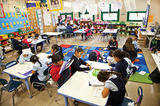
This resource includes both steps of a 2-part activity designed to get students reflecting on their learning and what they can do to help themselves and each other. Students are asked to post their answers on a Padlet wall created by the teacher. This activity can be used in face-to-face classrooms as well as adjusted for online.
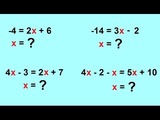


The resource is part of the contents of Subject 4º DLL (Didáctica Lectura y Literatura) - Spanish didactic concepts. Faculty of Education (University of Alicante)

This robust set of videos, activity sheets, and short written summaries is designed for anyone to use when integrating speaking assignments and activities into college level courses. Each video highlights a specific student activity, applicable to any delivery mode, complete with a video introduction, template, and lesson plan to download. Open pedagogical opportunities are incorporated into several modules with emphasis on student led engagement. Created by Miranda Hawk at Madison Area Technical College.
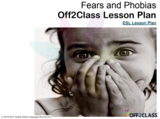
Fears and PhobiasThis lesson plan is designed for upper-intermediate students and introduces new vocabulary related to fears and phobias. You should prompt students to talk about what scares them using the questions and vocabulary provided.If you want additional lesson plans and support, including teachers’ notes, be sure to register for a free Off2Class account.

Short Description:
This supplementary first-year physics textbook explores the role of language, alongside figures and mathematical symbols, in solving physics problems. The aim of this textbook is to help students gain extended, practical awareness of the roles of language in solutions to a range of first-year physics problems. The learning is guided mainly by comparing how language is used in formal, written solutions and in students' problem-solving dialogues. With new awareness how and why language is used in these two central forms of university physics practice, students can more effectively communicate solutions and guide their development as physicists and users of scientific English. After introducing problem-solving strategies and foundational aspects of language, the textbook guides students in the three primary functions of language in solutions: to represent concepts and phenomena, organize messages to facilitate their interpretation, and evaluate knowledge claims. Learning is largely task-based, emerging from completing the textbook tasks and reviewing feedback. The textbook is recommended for use alongside first-year physics instruction in self-guided study or instructor-facilitated contexts such as physics tutorials and English for physics courses.
Long Description:
This textbook combines the perspectives of physics and language to help you solve first-year physics problems and communicate your problem-solving choices more consciously and effectively. From the view of physics, the units present physics problems linked to the set of physics concepts typically taught in first year, focusing on how students with various physics competencies solve problems in dialogue and report their solutions in writing. By exploring the various competencies involved in solving physics problems and illustrating these competencies in solutions produced by students with different strengths and weaknesses, this textbook aims to help you understand and develop your own competencies.
A language perspective on learning first-year physics
The perspective of language complements the learning in physics because language systems are a key resource for thinking through and solving physics word problems. Language use in specialized activities such as solving physics problems tends to form identifiable patterns, implying that some language choices are more effective than others. Working through this textbook, you will observe the systems of language choices available for solving physics problems and develop capacities to use language more mindfully and effectively in your physics work.
Physics knowledge is produced, exchanged, and assessed in two main forms in first year courses, in speech and writing. In each textbook unit, a problem is introduced that requires application of one or more focal physics concepts, exploring spoken and written solutions to this problem to help you improve the effectiveness of solutions in both forms. Each unit also focuses on a specific function or sub-function of language, such as how concepts are represented or how solutions are organized, which is explored by comparing the spoken and written modes of communicating physics.
Across the 14 units, the textbook describes and explains the functional scope of the English language in shaping valued physics knowledge. For example, we explore the use of particular functional structures of English that physicists typically use when a problem requires us to re-interpret the concrete, physical world in terms of abstract concepts, such as when modelling a running person (concrete) as a point mass (concept).
The language perspective helps us answer questions such as these: What are the functions of language in solving physics problems? How does language help us to shift perspectives between a problem’s dynamic, physical situation and the stable, theoretical concepts involved? What are the roles of visual figures and mathematical symbolism relative to language in solving physics problems? What language choices are involved in effectively solving a physics problem in group dialogue and writing? Can we distinguish between reporting and explaining our solution? If so, how? What does it mean for a solution to be effectively communicated?
The knowledge and experiences you build in this course about the role of language in physics will help you to meet your expectations for solving physics problems and those of your peers and instructors. This aim is achieved in combination with the increased awareness and development of your competencies in solving physics problems. The guiding aim of this textbook is for you to apply the knowledge and experiences you gain towards your personal and professional development according to your interests in physics and science.
The organization of the textbook
The roles of language in solving physics problems are explored in increasing detail across the textbook units. Unit 1 provides the foundational perspectives on physics and language. The focus for learning is on strategies for solving word problems and the units and scales of language use in communicating the solutions.
Units 2 to 14 focus on physics concepts typically covered in first year, from motion along a straight line to fluid dynamics. Each unit introduces a problem developed to apply the unit’s focal concept and explores with you the solutions to these in spoken and written forms. A second problem is then introduced in the unit as an opportunity to apply, assess, and reflect on what you’ve learned.
Ways to use the textbook
The focus of this textbook is on improving your use of language, problem-solving strategies, and physics concepts in solving problems. As such, this book is not intended to replace a physics first-year textbook. Rather, this textbook is designed to be used in combination with a standard first-year physics textbook or course, where the methods and concepts are covered in detail.
This textbook is designed for first-year Science or Applied Science programs, where it would be used in (1) the tutorial section of the physics course focusing on problem-solving competencies and communicating solutions or in (2) a linked content-and-language syllabus such as an English for First-Year Physics course. This textbook will also find good use in (3) advanced placement high-school science programs, (4) pre-sessional university preparation programs, and (5) refresher courses for first-year physics. The book was designed especially for multilingual students of physics; however, it is expected to interest any physics enthusiasts with an interest in explicit understanding and extended practice of the language of physics.
The course is designed to be used in self-guided learning, peer study groups, or instructor-led classes. Whatever approach you take, learning through this textbook happens through your active engagement with the tasks. The task-based design involves a cycle of pre-task preparation, task activity, and post-task checking of responses and reflection. The post-task checking of your responses is crucial as this is typically where the effectiveness of your task performance is explained, that is, where the teaching emerges in dialogue with your input.
This course also includes optional features for deeper engagement and community-building around the language of solving physics problems. Chief among these features is the sharing of physics problems and solutions produced by you, the textbook users. As a user of the online textbook, you are invited to submit your solutions to the collection and compare these in terms of language features against our analyses of how language is used across all submissions. Users are also encouraged to design and share unique problems that reflect their particular interests and curiosities within and beyond physics. As the collection grows, so will the analyses, opportunities for engagement, and the learning community.
Word Count: 6443
(Note: This resource's metadata has been created automatically by reformatting and/or combining the information that the author initially provided as part of a bulk import process.)

This resource contains the video recording of the BranchED Spring 2020 Webinar and transript attached as a text file.

Spring 2023
Word Count: 27556
Included H5P activities: 4
(Note: This resource's metadata has been created automatically by reformatting and/or combining the information that the author initially provided as part of a bulk import process.)

Some tips about obtaining an educational scholarship

Short Description:
What is the place of sports at a university? Students share what they learned about sports of all kinds on campus. From 'built' & 'natural' environment sports, to esports, recreational activities, intramural, club, and spectator sports, students share stories of how sports influence the college going experiences of campus life. Cover Photo Credit: Dennis Wise/University Photography
Word Count: 21855
(Note: This resource's metadata has been created automatically by reformatting and/or combining the information that the author initially provided as part of a bulk import process.)

Short Description:
This resource will explore the validity of arguments and/or conclusions in dinosaur research through evaluating the scientific evidence. Students using this resource will read, experiment, and evaluate scientific literature surrounding dinosaurs. Students will have the opportunity to work with others to evaluate the plausibility of the dinosaur concepts and theories, and engage in hands-on experiments to add additional information to their interpretations. Students will learn to participate in evaluation mechanisms to assess critical thinking and science literacy.
Long Description:
This resource will explore the validity of arguments and/or conclusions in dinosaur research through evaluating the scientific evidence. Students using this resource will read, experiment, and evaluate scientific literature surrounding dinosaurs. Students will have the opportunity to work with others to evaluate the plausibility of the dinosaur concepts and theories, and engage in hands-on experiments to add additional information to their interpretations. Students will learn to participate in evaluation mechanisms to assess critical thinking and science literacy. Goals
This course is intended to engage students in science and the fossil record through the study of dinosaurs. It is intended that students will develop ideas, evaluate existing theories, and explore evidence to support or refute dinosaur interpretations. Through this course it is intended that students develop scientific fluency and critical thinking skills. Objectives Explore the scientific method and how science is conducted, communicated, and synthesized in dinosaur research. Develop theories behind dinosaur morphology and behavior and assess how these theories are supported or refuted by evidence from the fossil record. Evaluate the usefulness of modern analogues in dinosaur morphology and behavior.
Word Count: 4855
(Note: This resource's metadata has been created automatically by reformatting and/or combining the information that the author initially provided as part of a bulk import process.)
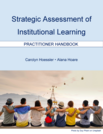
This Handbook describes an action research process for assessing student learning outcomes using faculty-led communities of practice.
Post-secondary institutions are often called to identify strengths and areas for improvement, to implement changes, and assess the impact of those changes — colloquially known as “closing the loop” or “closed-loop assessment”. While institutions aspire to close the loop, little evidence exists that their aspirations are fulfilled. Closing the loop requires a well-articulated, detailed, and reflexive process. If successfully implemented, this process can increase the likelihood of improved student outcomes. Post-secondary institutions collect a plethora of direct and indirect student learning data and are increasingly reporting out on assessment findings; however, they frequently stop short of acting on the results gathered and then evaluating interventions that are implemented.
SAIL responds to the call to “close the loop”.
The SAIL Practitioner Handbook is based on our experience at Thompson Rivers University—an open access, teaching and research university located in the interior of British Columbia. The methodology, process, and resources described in this Handbook are designed with the local context in mind. We encourage you to borrow and adapt our methodology to develop a process that best fits your institution’s needs. The primary audience for the SAIL Practitioner Handbook is quality assurance practitioners and educational developers.
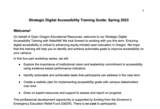
This training guide developed by WebAIM and Open Oregon Educational Resources outlines a professional development curriculum to help institutional teams advance digital accessibility in Oregon's public colleges and universities. The guide explains the purpose and outcomes of the training, as well as the delivery format and community guidelines for engagement. In winter and spring 2023, 13 institutions in Oregon engaged in the training with the goal of creating digital accessibility action plans that benefit their campus open education programs and beyond.